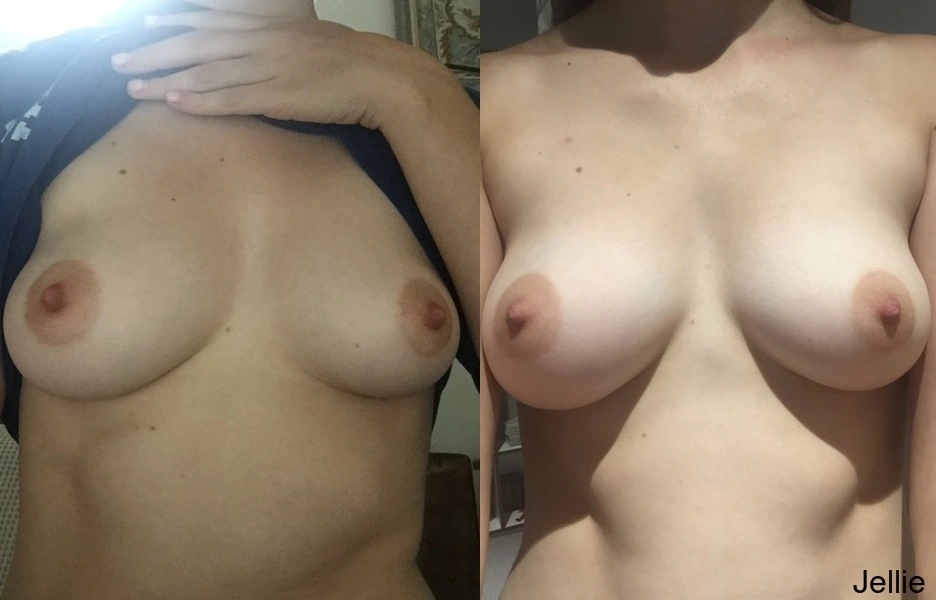Mint

This is about mint, including its hormonal properties and hints on its use for breast enhancement.
Etymology
The genus of Mint goes by the scientific name of Mentha. The scientific name of peppermint is Mentha piperita. Spearmint's scientific name is Mentha spicata. Mentha suaveolens is the proper name for pineapple mint. Mentha arvensis has the common names of wild mint, field mint and cornmint.
Mint belongs to the Lamiaceae family, and this family also goes by Labiatae or the mint family.
Hormonal properties
Spearmint is often suggested to have estrogenic properties, however its effect is conditional. Based on anecdotal evidence, it behaves as an estrogen antagonist on ERα in the breasts.
Phytohormones of interest
Spearmint (Mentha spicata) contains anethole, and the lignan cyclolariciresinol.
Peppermint contains the phytohormone anisoles: estragole and anethole (trans-anethole).
Published studies and discussion
A review noted that spearmint tea increased luteinizing hormone (LH) and follicle stimulating hormone (FSH) levels, but it claimed that mint had neglible effect on total androgen levels. According to a study by Celik et al., peppermint is an aromatase inhibitor. Spearmint can raise estrogen levels likely due to its FSH raising ability. A rise of LH levels subsequently raises androgens.
Mentha arvensis (cornmint) has lowered the mineralcorticoid corticosterone in rats.
Anecdotal evidence
In small doses and with the right complementary herbs, spearmint increases estrogenic signs on the body. However, in large amounts, it has androgenic attributes. Mint can cause acne, increased menstrual heaviness, and hirsuitism symptoms. This suggests that in small doses, androgenic properties of mint sensitize aromatase conversion. This estrogenic response becomes limited with higher doses of mint.
Spearmint seems to contain an ERα antagonist. The ERα antagonist is likely the lignan cyclolariciresinol, and it is unlikely to be anisoles.
Peppermint works like spearmint, except it is more powerful and has more potential to have more androgenic effects.
Use
Mentha for breast enhancement

The previous recommendation was for spearmint to be limited to minimal amounts. The use of mint has been replaced by minimal amounts of sesame seeds.
For more lasting and balanced effects, see herb programs.
Mentha or herbs with similar properties are in herb programs based on menstrual phases. There must be balance throughout phases, and combinations of herbs help the body acheive balance for health, breast growth and hip growth. It's important that menses is light and short. Also, preventing an excess of negative symptoms for menses helps set the balance for proliferative phase. Luteal phase uses a different combination of herbs than proliferative phase for symptoms. For a simplified herb schedule, where there's commonality of herb recommendations for symptoms such as swelling and signs of excess estrogen, use nonmenses. BCP01 is a composite page of pieces of different programs on birth control or IUD use.
Herb timing and combinations' success for breast enhancement relies on menstrual phases. Descriptions and pictures of results from herb combination use can be seen in programs. For more guidance, see guide, or hirsutism-topic.
Similar herbs
Sesame seed, like spearmint, contains the lignan cyclolariciresinol which likely has an effect on the breasts.
Almonds also contain the lignan cyclolariciresinol. Almonds also have phytoestrogens and stilbenes. Stilbenes could possibly behave like spearmint which increases FSH or LH.
Basil (Ocimum) contains anisoles, which spearmint and peppermint also have. Basil is also an emmanogogue, which seems to be stronger than mints. Basil is not recommended: it seems too strong, and it is less suitable than peppermint or spearmint.
Precautions
Concentrates of mint are easily toxic in amounts comparable to a teaspoon.
There are questions about herbs that contain anisoles: anethole, estragole or their derivatives about their roles in cancer. Herbs containing anisoles that are commonly used in food are not a major concern.
See precautions for more details of care to be taken with herb use. Proper nutrition is a consideration for health. Also, check for the latest blog updates about herb and hormone safety.
It is very important that menses be light and not prolonged.
If you have hirsutism, PCOS, hot-flashes, other signs of hormone imbalances, see estrogen-imbalance, and hirsutism program journals at hirusitism-topic before trying herbs.
Herb concentrates can be tens of times more potent by weight than herbs in solid form. This can easily lead to hormone imbalances. For this reason, concentrate extracts are not recommended for extended or excessive internal use, especially during fertility years. Concentrates shouldn't be used to overcome plateaus. Another issue with herbal extracts, is that they may not have the full range of properties of the herb. Essential oils are not recommended for breast enhancement. If opting to use herbal extracts, use food grade extracts, with no more than 1 drop at a time diluted in water.
More


For the latest herb programs and how to get started, see: guide. Pictures of breast enhancement can be seen in the program journals of Anon02, Anon08, Anon09, Bubblemelon and Jellie.
For resources on hips and butt enhancement, see: /appendix/hips-butt-enhancement and /appendix/kettlebell.
breast-endocrinology.pdf describes the science of breast development and endocrinology. It also describes symptoms related to hormone imbalances. Biology and hormone imbalances are excerpts from this ebook. breast-endocrinology.pdf uses a Creative Commons (CC BY-ND 4.0) license.
Breast.is blog
References:
- An Update on Plant Derived Anti-Androgens. https://www.ncbi.nlm.nih.gov/pmc/articles/PMC3693613/.
- Spearmint herbal tea has significant anti-androgen effects in polycystic ovarian syndrome. A randomized controlled trial. https://www.ncbi.nlm.nih.gov/pubmed/19585478/.
- Effect of spearmint (Mentha spicata Labiatae) teas on androgen levels in women with hirsutism. https://www.ncbi.nlm.nih.gov/pubmed/17310494.
- A Comparative Analysis of the Chemical Composition, Anti-Inflammatory, and Antinociceptive Effects of the Essential Oils from Three Species of Mentha Cultivated in Romania. https://www.ncbi.nlm.nih.gov/pmc/articles/PMC6155945/.
- The Anti-Stress Effect of Mentha arvensis in Immobilized Rats. https://www.ncbi.nlm.nih.gov/pubmed/29370076.
- Modulation of Aromatase by Phytoestrogens. https://www.ncbi.nlm.nih.gov/pmc/articles/PMC4699002/.
- Investigation of aromotase inhibition by several dietary vegetables in human non–small cell lung cancer cell lines. https://www.journalagent.com/tjb/pdfs/TJB_38_2_207_217.pdf.
- Phenolic and Volatile Composition of a Dry Spearmint (Mentha spicata L.) Extract. https://www.ncbi.nlm.nih.gov/pmc/articles/PMC6274304/.
- Almonds (Prunus Dulcis Mill. D. A. Webb): A Source of Nutrients and Health-Promoting Compounds. https://www.ncbi.nlm.nih.gov/pmc/articles/PMC7146189/.
Etymology & Definitions:
- USDA Plant profile: Mentha. https://plants.usda.gov/core/profile?symbol=MENTH.
- U.S. National Plant Germplasm System: Mentha. https://npgsweb.ars-grin.gov/gringlobal/taxonomygenus.aspx?id=7464.
- U.S. National Plant Germplasm System: Lamiaceae. https://npgsweb.ars-grin.gov/gringlobal/taxonomyfamily.aspx?id=619.
